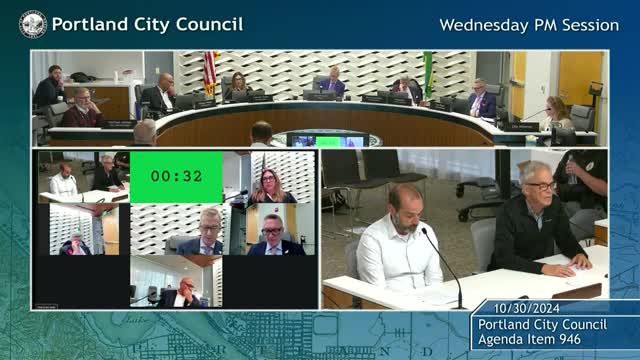Portland debates height limits to boost downtown housing
October 31, 2024 | Portland, Multnomah County, Oregon
This article was created by AI summarizing key points discussed. AI makes mistakes, so for full details and context, please refer to the video of the full meeting. Please report any errors so we can fix them. Report an error »

In a recent Portland government meeting, city officials and stakeholders engaged in a robust discussion regarding proposed height modifications for buildings in the central city, emphasizing the need for increased housing density amid ongoing challenges in the housing market.
Key concerns were raised about the potential unintended consequences of blocking scenic view corridors and shading public parks, which could permanently impact the city's most cherished spaces. Participants highlighted the importance of carefully studying the effects of any height modifications within the broader context of the central city plan, with calls for the design commission to be actively involved in these considerations.
Commissioners expressed frustration over Portland's underperformance in housing generation compared to other cities, attributing this to a combination of high interest rates, land costs, and overall development expenses. Some officials questioned whether the city had been sufficiently aggressive in addressing the housing crisis, suggesting that existing barriers to development might not solely stem from economic factors but also from regulatory constraints.
Supporters of height adjustments argued that allowing taller, slimmer residential towers could enhance downtown vibrancy and livability, drawing comparisons to more successful urban environments like Vancouver, BC. They contended that the current regulatory framework limits development potential and fails to attract necessary investment.
The Historic Landmarks Commission voiced support for additional housing units but cautioned against height increases that could lead to the demolition of historic structures and negatively affect neighborhood identity. They emphasized the need for public engagement in decisions that will shape the built environment for decades.
As the meeting progressed, the conversation shifted towards the relationship between height and floor area ratio (FAR), with several speakers advocating for a comprehensive approach that includes both elements to effectively address housing needs. The city staff confirmed that a project is underway to further explore FAR issues, with public outreach expected to begin early next year.
Overall, the meeting underscored a critical juncture for Portland as it grapples with housing shortages and seeks to balance development with the preservation of its unique urban character. The discussions highlighted a consensus on the urgency for action, with many calling for bold measures to revitalize the downtown area and meet state housing mandates.
Key concerns were raised about the potential unintended consequences of blocking scenic view corridors and shading public parks, which could permanently impact the city's most cherished spaces. Participants highlighted the importance of carefully studying the effects of any height modifications within the broader context of the central city plan, with calls for the design commission to be actively involved in these considerations.
Commissioners expressed frustration over Portland's underperformance in housing generation compared to other cities, attributing this to a combination of high interest rates, land costs, and overall development expenses. Some officials questioned whether the city had been sufficiently aggressive in addressing the housing crisis, suggesting that existing barriers to development might not solely stem from economic factors but also from regulatory constraints.
Supporters of height adjustments argued that allowing taller, slimmer residential towers could enhance downtown vibrancy and livability, drawing comparisons to more successful urban environments like Vancouver, BC. They contended that the current regulatory framework limits development potential and fails to attract necessary investment.
The Historic Landmarks Commission voiced support for additional housing units but cautioned against height increases that could lead to the demolition of historic structures and negatively affect neighborhood identity. They emphasized the need for public engagement in decisions that will shape the built environment for decades.
As the meeting progressed, the conversation shifted towards the relationship between height and floor area ratio (FAR), with several speakers advocating for a comprehensive approach that includes both elements to effectively address housing needs. The city staff confirmed that a project is underway to further explore FAR issues, with public outreach expected to begin early next year.
Overall, the meeting underscored a critical juncture for Portland as it grapples with housing shortages and seeks to balance development with the preservation of its unique urban character. The discussions highlighted a consensus on the urgency for action, with many calling for bold measures to revitalize the downtown area and meet state housing mandates.
View full meeting
This article is based on a recent meeting—watch the full video and explore the complete transcript for deeper insights into the discussion.
View full meeting
